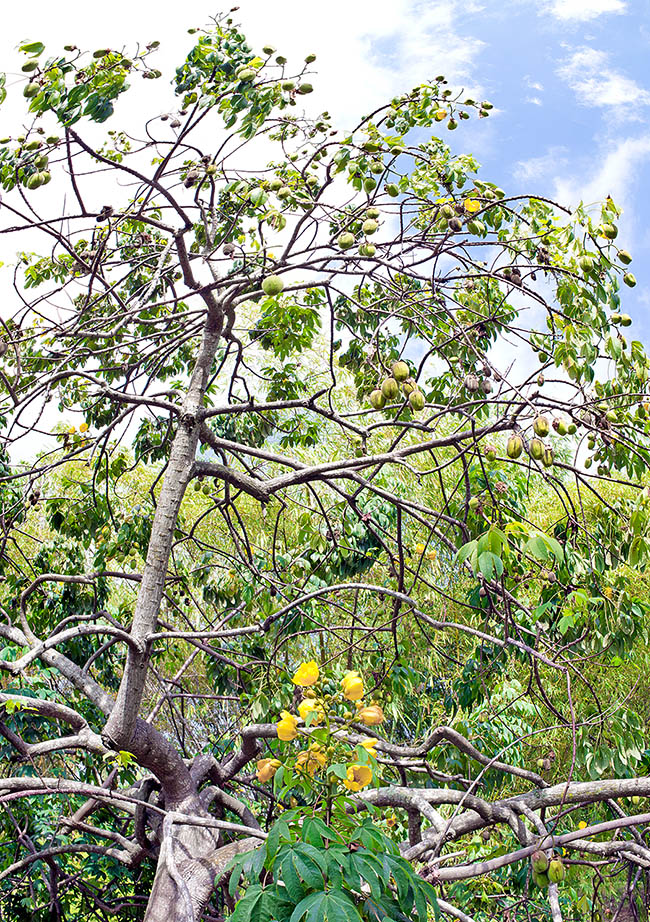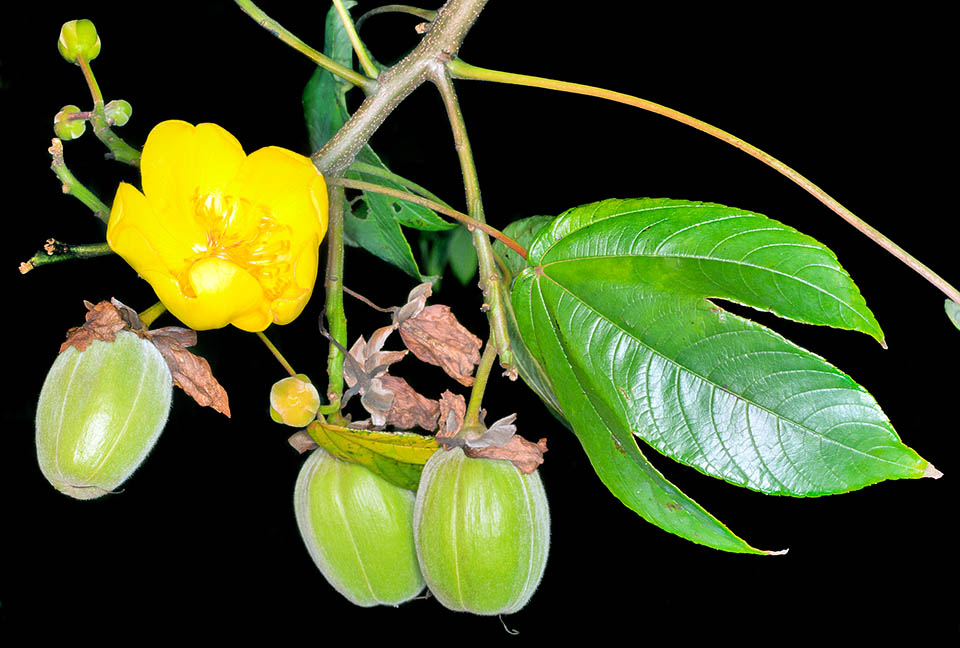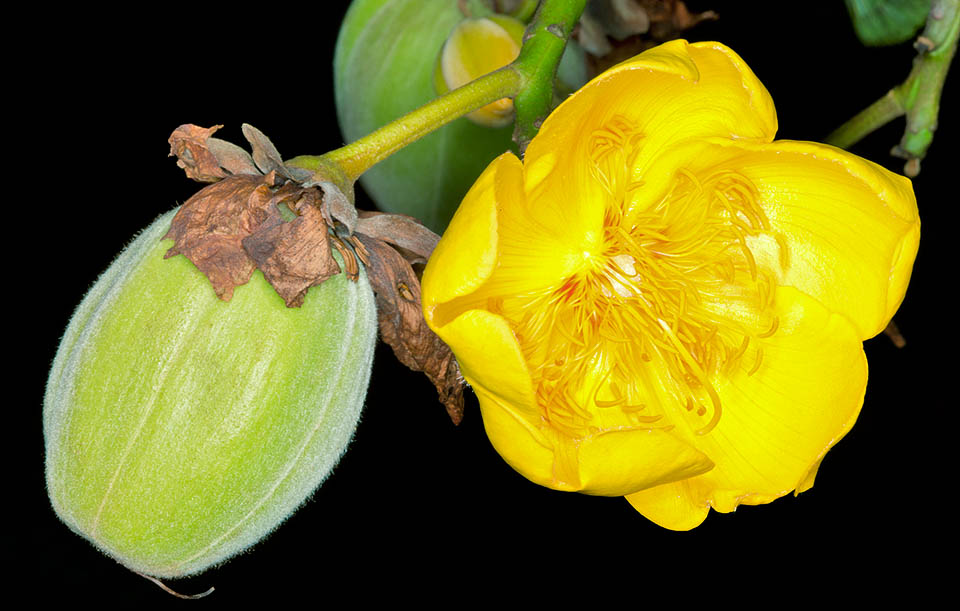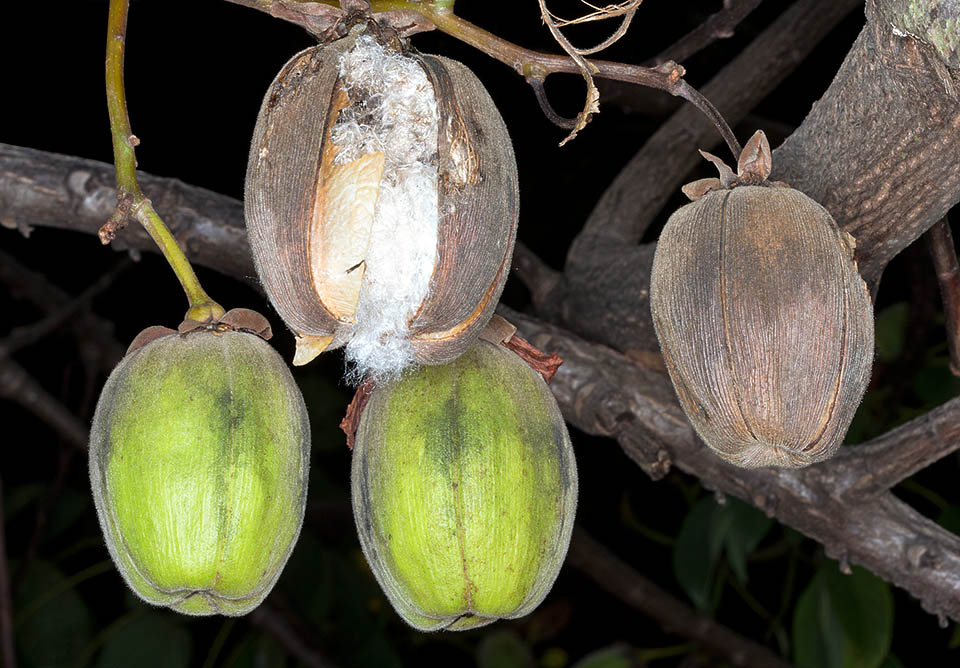Family : Bixaceae

Text © Pietro Puccio

English translation by Mario Beltramini

Cochlospermum religiosum is a small 3-8 m tree native to India and Myanmar. The specific epithet of "religious" comes from the fact that in India the flowers are offered for devotion in the temples, especially to god Shiva © Giuseppe Mazza
The name of the genus is the combination of the Greek terms “kochlos”, indicating a spiral shell, and “sperma” = semen, with reference to the shape of the seed; the name of the species is the Latin adjective “religiosus, a, um” = religious, devout, with reference to the flowers offered for devotion in the temples, in particular to the God Shiva.
Common names: buttercup tree, cottontree, Indian buttercup tree, silk cottontree, torchwood tree, white silk cotton, yellow silk cotton tree (English); gabdi, galgal, gjara, plaga, (Hindi); algodão-da-Índia (Portuguese); capoquero blanco (Spanish); kattupparutti, malaipparutti, tenaku (Tamil); Butterblumenbaum (German).
The Cochlospermum religiosum (L.) Alston (1931) is a shrub or a deciduous or semi-deciduous small tree, 3-8 m tall, with greyish bark, deeply grooved, from which exudes a gummy liquid of orange colour. The leaves, grouped at apex of the branches on a petiole long up to 20 cm, are alternate, palmate with 3-5 elliptic-lanceolate lobes with pointed apex and entire or crenate margin, 8-15 cm long and up to 20 cm broad, coriaceous, of intense glossy green colour on the upper page, tomentose below.
Bisexual fragrant flowers, of about 10 cm of diameter, united in terminal panicles, which appear mainly after the fall of the leaves, with corolla formed by 5 obovate petals deeply emarginated of golden yellow colour, about 5 cm long and 3 cm broad, and several orange stamina. Among the main pollinators are the bats, in particular the Pteropus giganteus (Brünnich, 1782), commonly known as Indian flying fox. The fruits are obovoid or pyriform dehiscent capsules of brown colour with 3-5 valves, of about 8 cm of length and 5 cm of diameter, containing numerous black reniform seeds 0,6 cm long and surrounded by a mass of white sericious hairs.

From the greyish bark, deeply grooved, exudes an orange gummy liquid. The long petioled leaves are alternate, palmate with 3-5 elliptical-lanceolate lobes © G. Mazza
Cultivable in the tropical and subtropical climate regions in full sun on particularly draining soils, even stony; when adult it can stand long periods of drought.

The 10 cm broad flowers are pollinated by the bats. The fruits are obovoidal or pyriform dehiscent capsules about 8 cm long and of 5 cm of diameter © Giuseppe Mazza
From the oil is gotten an oil employed in the soap industry and the residue of the pressing is utilized as feed for livestock, whilst the thin fbres enwrapping them, similar to those of the kapok (Ceiba pentandra (L.) Gaertn., 1791) are at times utilized for paddings.

Leaves, flowers, bark, roots and gum display medicinal virtues. From the seeds they get oil for soap and the residues are used as cattle food, whilst the thin fibres wrapping them, similar to the Kapok ones, are used for paddings. Seen its fast growth, the tree is finally employed in the reforestation of degraded areas © Mazza
Synonyms: Bombax religiosum L. (1753); Bombax gossypium L. 1767; Cochlospermum gossypium DC. (1824); Wittelsbachia gossypium Mart. & Zucc. (1824); Maximilianea gossypium Kuntze (1891); Cochlospermum balicum Boerl. (1899).
→ To appreciate the biodiversity within the BIXACEAE family please click here.
